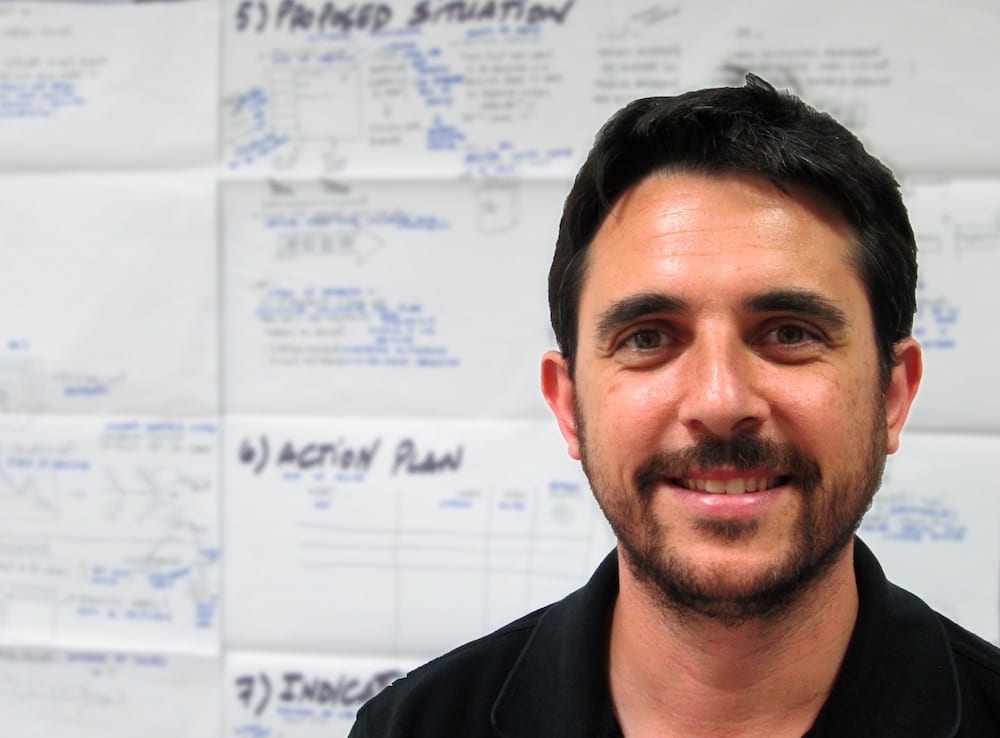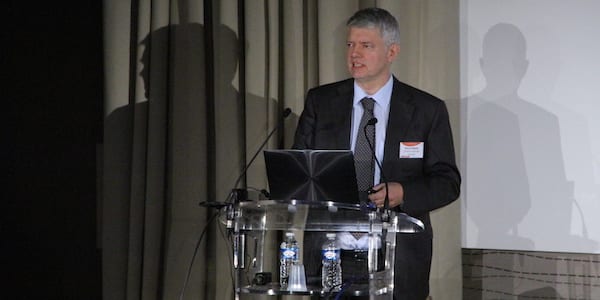
Gap analysis, made simple
FEATURE – The difficulty of sustaining results often stems from our inability to monitor the KPIs that truly matter and to focus on business priorities. The author suggests a hands-on approach to strategy deployment.
Words: Nestor Gavilan Ferrer, Director of Lean Learning, Instituto Lean Management - Barcelona
Throughout my career as a lean coach, I have come across countless organizations that started to implement lean tools and techniques in earnest only to see their results evaporate a few months later. That’s typically when a disgruntled management team concludes that Lean Thinking doesn’t work.
In fact, I have seen this happen in companies at different stages of their lean transformations. After analyzing this time and time again, I learned that one of the reasons behind this failure is that these organizations couldn’t establish a set of KPIs enabling them to set the right business priorities and make the right decisions in a structure way.
It’s normal to start implementing lean tools, but after just a few months you hear management say that lean is not bringing the results. On the other hand, I also hear companies saying that there is a lack of resources to bring the organization to new levels of business excellence. It’s clear to me that it is necessary to establish KPIs that can help me understand business priorities in a structured way. And if you think that this is due to lack of data, think again! Normally, organizations have access to a huge amount of data, but fail to use them in a way that gives them a true understanding of the state of the business.
This situation made me reflect and I decided to capture my experience in a book, to provide some inspiration to companies that are starting or structuring a lean transformation. It’s called Solucionando (sin) Problemas and it will soon be available in English. It provides companies with a way to put in place a system of KPIs allowing them to effectively allocate resources where they are needed and achieve their goals. For those organizations that already manage KPIs well, the book offers the model for a management system that helps them to sustain results.
There is another, rather common problem in lean organizations: management teams expect quick wins and often forget that lean is a long-term commitment. However, I think the opposite also true: we can’t only focus on the future and forget about the results we need today to keep the lean journey and the organization itself afloat. Businesses need to meet their needs of today in order to lay the foundations for their future success. I am suggesting we can define a set of KPIs that help us define the actions we can take today for quick results and those that will require more time to carry out (like the development of leadership behaviors). There are lean tools that can give us quick results, which perhaps are not completely sustainable yet but are still useful to feed our transformation.
A FOUR-STEP PROCESS
The book is divided into four chapters, each of them corresponding to one step in this process of gap analysis and gap “closure”.
- First, we need to establish the KPIs. It’s important to always base this exercise in the SQDCP format (Safety-Quality-Delivery-Cost-People, inspired by Toyota) and identify indicators for each of the five elements that tell me at all times where I am and where I should be (a simple red/green color coded system will do). Being able to see where we are by means of measurements is a precondition to any improvement. Whatever “hypothesis” management might have should be linked to an indicator: for instance, it is one thing to say that sales are bad, it is another to know how bad they are by looking at indicators like volumes shipped to customers or monthly revenue. This move from hypothesis to data is critical to achieve business goals.
- Second, we need to understand what’s preventing us from achieving the results we want. In other words, we need to figure out what the gap is (I like to define it as “wish vs reality”) and where to focus our efforts. It is not enough to know there is a gap; we also need to understand the reason behind it. You want to tackle those problems that are the biggest contributors to the gap, which I call “big fish” in the book. They require a big effort to get out of the water but, once caught, they will get you much closer to your target condition. How do you know what fish to focus on? By running an effort/impact evaluation to understand where to focus our work. To evaluate the necessary effort, I typically use three parameters to answer this question: how long will it take? How many resources will we need? How much investment? This exercise will tell us what the biggest projects we should open are, what we can tackle now and what should wait. In the book, I also explain what team dynamics we need to establish in order to reach a consensus on what to focus on. I call it the “Eurovision Method”, where teams vote to get to alignment on what’s important to work on. This way, priorities are identified by the team (not imposed from the top) and alignment around them is achieved.
- At this point, we know what we are aiming to achieve, and we can just aim and shoot at the target in order to close our gap. There are several methodologies and tools that we can use for problem solving, but I recommend A3 Thinking (the best guide on it you’ll find is John Shook’s Managing to Learn). The core elements of any improvement approach – Gap, Action and Results – are the things I immediately look for in any board I observe, because they are the foundations of the continuous improvement cycle. A3s allow me to identify the actions I need to take to fill the gap – the countermeasures to our problems – linked to a robust diagnosis and analysis of the current state. To ensure A3 Thinking permeates the whole process, from start to finish, I suggest you use an impact graphic to understand how today’s actions will influence your tomorrow. If I open three A3s in, say, the month of May, what’s the impact these will have by the end of the year? Having this kind of visibility will boost the level of commitment of the team towards to A3 and the achievement of the goal. In turn, this system allows me to open as many A3s as are necessary to close the gap with an optimal allocation of resources. It is “strategy deployment” in the truest sense of the term.
- Finally, you need to define the management system and leadership behaviors necessary to ensure these results are maintained over time. For the approach described thus far to work as management system, you constantly have to adjust, like a crank is used to adjust a mechanism. This hinges on a specific set of leadership behaviors, in particular during the periodic review of results by your visual management boards. Organizations often complain that the meetings are too long and inefficient. In Chapter 4 of the book, I suggest a structure for them and explain what to do in each stage of the meeting. This is where the role of a leader becomes most important. They need to have the discipline to ensure this review process is followed so that the meetings are focused and effective. Without this, continuously monitoring indicators and acting on problems is impossible. Said otherwise, it’s impossible to use that crank that calibrates the system.
My experience has confirmed the validity of this model time and time again. This is why I have decided to include storytelling in the book to bring the model to life through examples inspired by real-life situations I have encountered.
I wrote this book for all those who struggle with hoshin kanri and some of its most complex implementations. I believe this model of gap analysis is a complementary but more approachable and hands-on way of deploying your business strategy.
Nestor's book, Solucionando (sin) Problemas, is available for purchase for Spanish-speaking readers. The English translation will be available soon.

THE AUTHOR

Read more


BOOK REVIEW – For our series of Q&As on recently published novel Lead With Respect, René Aernoudts shares what the key lessons learnt were for him.


WEB SERIES – Today, we launch a new documentary series on lean around the world, with the first season focusing on lean in Brazil. In the first episode, we visit the lean clinic on a mission to reduce the burden on cancer in our lives.


CALL TO ARMS – Despite the spread of lean principles across the world, only a handful of universities have included the methodology in their programs. This article is a call-to-arms telling us why we have an obligation towards future generations.


VIDEO INTERVIEW - We spoke with Toyota Motor Europe's CIO at the Lean IT Summit about hoshin and IT, the application of the agile methodology, and the power of coaching.

